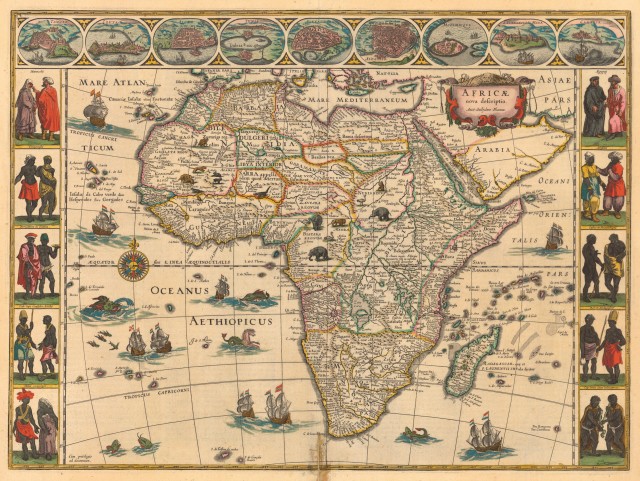Maps and Mapmaking
If Africans had a mapmaking tradition before the coming of Europeans, no traces of it survived. The mapping of Africa was carried out largely by Europeans until independent African nations began producing their own maps in the late 1900s.
The Greeks created the earliest maps of Africa, and they dealt mainly with the northern and eastern coastlines of the continent. Later, Arab cartographers added to these maps. Although the Arabs devoted little attention to the interior of Africa, their knowledge of the eastern coast was appreciated by Chinese cartographers, who used it in drawing their world maps.
Beginning in the 1400s, Portuguese navigators charted the west coast of Africa. They launched a wave of exploration, and for several hundred years Italian, Dutch, French, English, and German mapmakers recorded the information that explorers brought to Europe. At first, maps of Africa dealt only with the outline of the continent. Details about the interior of Africa came from written texts and were based largely on guesswork.

The oldest known printed map of the whole continent was published in Italy in 1508. Gradually, African maps began to include names of places in the interior. From the late 1700s through the 1800s, travelers and explorers published a vast body of material on Africa, including maps. For the most part, these maps were concerned with locating the main physical features of the continent, especially rivers and lakes, and with drawing attention to areas that held valuable economic resources. Europeans felt that producing scientific maps was part of the process of “civilizing” Africa. Cartography helped justify their penetration into the continent and their growing involvement in its affairs.
Beginning in the late 1800s, the mapping of Africa was driven by the needs of the European powers that controlled most of the continent.
These colonizers wanted maps recording boundaries and property ownership. After the 1940s, governments and organizations involved in planning social and economic development programs required largescale maps showing land features and resources. Cartographers used new techniques such as aerial photography—taking images from planes with special cameras—to produce highly detailed maps.
Independence had little immediate effect on mapmaking in Africa. The former colonial powers continued to provide cartography as a form of foreign aid. In the late 1900s, however, many African countries loosened their ties with former colonial powers, and cartography became the responsibility of African national mapping agencies. Economic difficulties, however, have limited their activities. As a result, some nations are more thoroughly mapped than others. (See also Travel and Exploration.)